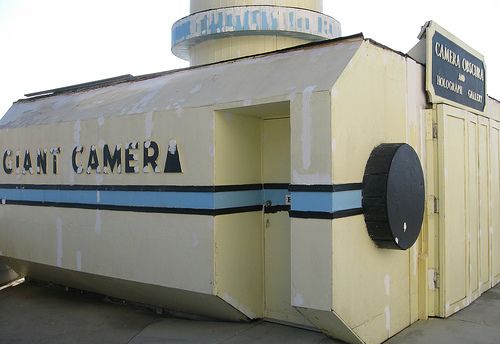
The Evolution of Photography
In this day and age, capturing a memory is as simple as pointing your phone or camera to the subject and hitting the (often digital) shutter button. Thanks to the speed and convenience of digital photography, we are able to quickly capture significant events and memorable occurrences and access them whenever or wherever we are. Saw a celebrity on the street? Click. Got involved in an accident and need to take photos as evidence? Point, shoot, and you're done.
Of course, things weren't always this quick and simple. Just a decade ago, the art of photography required actual cameras, films, and dark rooms. And the time before that, photography involved sun prints and metal plates. Yes, the art of taking pictures does go way back and in order to truly appreciate the beauty of modern photography, it's important to take a look back and see how it evolved into the fast and easy process it is today.
Camera Obscura
Known as the very first camera, the camera obscura is a device consisting of a box or room with a hole on one side, and is used to project "an image of its surroundings on a screen." The camera obscura lets light in through its hole, which then allows the light to hit a surface inside the box, which can then be projected to another surface.
Joseph Nicephore Niepce
In 1827, Joseph Nicephore Niepce produced the first photography by combining the camera obscura with photo-sensitive paper, thus creating the first photograph.
Louis Daguerre
Then came Louis Daguerre who figured out a way to affix images onto a sheet of metal. He used a sheet of silver-plated copper and allowed the image to imprint on it. He then dipped the plate in a silver chloride solution which enabled the image to actually stick to the plate.
Continued Evolution
People continued to develop Daguerre's process, and soon they were able to figure out how to affix images on paper instead of metal sheets. Henry Fox Talbot, and English botanist and mathematician developed the paper-negative process and this paved the way for more developments including wet plate negatives, flexible roll films, color films, and more.
By the time the 1970 rolled along, the public was able to get its hands on point and shoot cameras, which allowed people to take photos on their own.
Digital, film-less photography also emerged after sometime, enabling people to capture images and save them straight to the memory card, without any need for chemicals and other long processes. This technology was then applied to cellphones, tablets, and other devices, which now allow us to take photos and access them within seconds of the capture.
Resources
For more information about photography, its history, and its applications, please check out the following resources:
International Center of Photography - The world's leading institution dedicated to the practice and understanding of photography.
Kids with Cameras - This is a non-profit organization that teaches photography to marginalized children in communities around the world.
Online Photography - This site showcases the finest contemporary photographers.
Aperture - This is a not-for-profit foundation that "connects the photo community and its audiences with the most inspiring work, the sharpest ideas, and with each otherâ€"in print, in person, and online."
National Association of Photoshop Professionals - Need training in Photoshop? This is the way to go.
The Daguerreian Society This is a group for people who are passionate about early photography.
American Society of Media Photographers - "The American Society of Media Photographers is the premier trade association for the world's most respected photographers."
The North American Nature Photography Association - An organization that promotes nature phtography and offers education and opportunities for aspiring nature photographers.
National Press Photographers Association - An organization supporting photo journalists.
Professional Photographers of America - "The world's largest nonprofit association for professional photographers."
Photographic Society of America - An organization dedicated to educating and connecting people though photography.
Royal Photographic Society - An group dedicated to promoting the art and science of photography.
Blue Earth Alliance - A group that aims to change attitudes, behavior, and even policies through compelling documentary photography.
Image credit: IrisDragon on Flickr
Categories
- Arts & Entertainment 100
- Automotive 186
- Business & Professional Services 219
- Construction & Contractors 298
- Clothing & Accessories 76
- Community & Government 95
- Computers & Electronics 74
- Education 75
- Food & Dining 86
- Health & Medicine 186
- Legal & Financial 100
- Home & Garden 179
- Industry & Agriculture 105
- Media & Communications 44
- Personal Care & Services 73
- Real Estate 68
- Shopping 74
- Sports & Recreation 87
- Travel & Transportation 102
- Animals & Pets 11
- Arts 9
- Community 9
- Chain 607
- Computers & Internet 8
- Health Care 10
- Communication & Media 7
- Shopping & Retail 10
- Health & Beauty 9
- Education & Schools 8
- Financial & Legal Services 14
- Home & Office 13
- Lawyers & Legal Services 7
- Financial & Services 1
